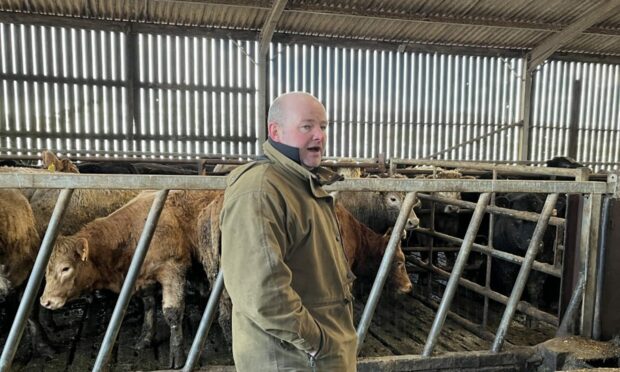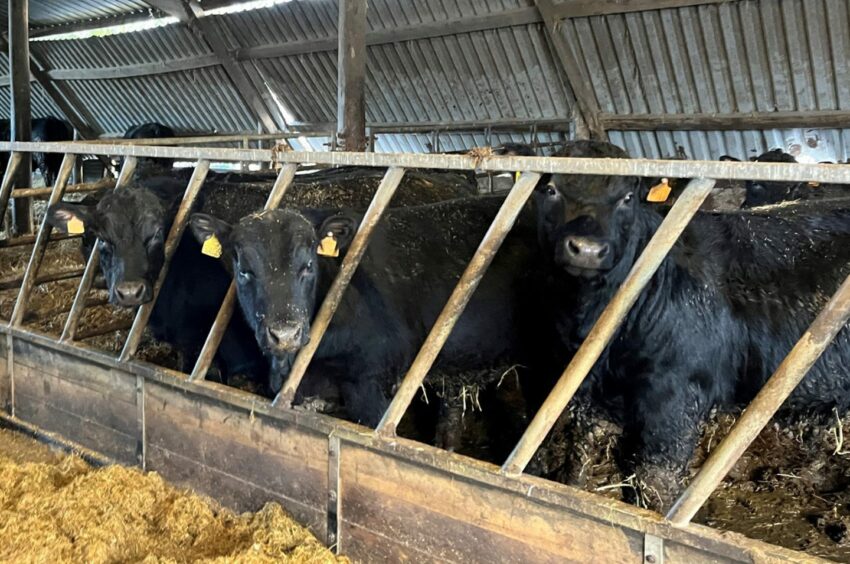Island farming may have its advantages but the higher costs of shipping inputs on and outputs off comes at a considerable cost.
Attendees at the first meeting of the new Argyllshire monitor farm on Islay heard how the business makes the most of what is locally available and the options of developing the enterprise further.
The Archibald family – Craig and Petra, their children, Kieran, Niamh and Innes, and Craig’s father, Tony – farm 2,000 hectares of ground at Craigens.
Almost 60 islanders and a good number from the mainland met at the farm, highlighting some areas for further focus to help reduce costs, including health and nutrition planning.
Visitors looked at the housed cows which are kept in a cubicle system as the family previously ran a dairy on their expansive tenanted farm.
The herd includes 220 Aberdeen-Angus cross suckler cows, 1,050 mainly Blackface breeding ewes, and 20 hectares of barley for Bruichladdich distillery.
Annually, 1,200 fat lambs and 200 yearling calves are sold, and they have diversified into farmed oysters and just recently an on-farm café.
Of the cows, 170 are put to Aberdeen-Angus bulls and 80 to the Charolais over a 12-week bulling period.
Around 150 of the well conditioned cows are outwintered on deferred grazing and draff is locally sourced.
Calving takes place on straw from late March to the end of June, with calves weaned at six months.
Calves are creep fed for five to six weeks, then go on to a complete ration of 1.5kg barley and 0.25kg soya with readily available draff and silage.
The ewe flock is tupped on the hill and after scanning in February, single carriers remain on the hill, with twin bearing ewes moved to the shore.
According to the family, the sheep enterprise is challenged by fluke resistance, geese, ticks and a variety of other problems.
Attendees were impressed with the farm management at the unit and said livestock were looking well and content and that the family made good use of their sheds.
Mixing their own feed was also seen as a positive.
Several areas attendees suggested to focus on included making health and nutrition planning a priority for the sheep and cattle enterprises.
They also suggested undertaking baseline soil and blood testing and implementing a health plan for fluke and worm management.
Investigating the link between cow nutrition and high twin rate of up to 10% compared to a high barren rate of 6-10% was always mentioned. Attendees said this could be down to cow fertility and nutrition, with some of the cows being identified as being too well fed.
The use of technology was also highlighted to make record keeping easier and assist in taking a closer look at costings.

